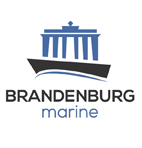The latest instalment of their Good Catch series to inform of the importance of safety on crane operations, bringing into attention an incident during cargo handling where a steel pipe swung and struck part of a ship, causing damage.
The stevedores had just started to offload the cargo of steel pipes from a bulk carrier using the vessel’s cranes. Cargo operations were being observed by the vessel’s Officer on Watch (OOW), but the stevedores were being directed by the stevedore foreman assigned to the vessel.
Cargo operations started smoothly as the first few lifts were performed without any issues. But on a subsequent lift, a large steel pipe swung and banged hard into the longitudinal bulkhead between the cargo hold and a ballast wing tank.
The impact dented the large steel pipe and punctured a hole in the ballast wing tank. The OOW observed what happened and yelled to the stevedore operating the crane to be more careful. But the next lift also swung and nearly banged into the same wing tank bulkhead. The OOW radioed the Chief Officer (CO).
Additionally, the CO quickly assessed the situation and contacted the stevedore foreman. He used his “Stop Work” authority consistent with the company’s safety management system to temporarily halt the work so that the safety of the operation could be re-assessed.
The OOW documented the damage to the cargo and vessel with photographs and a written description of what happened. The CO and OOW then met with the stevedore foreman and the stevedores conducting the cargo operations. They discussed ways to prevent damage to the cargo and the vessel that focused primarily on:
- slowing down the pace of the lifts;
- slowing the speed of rotation when the crane turned with a load and
- better communication between the stevedore crane operator and the hatch gang about the cargo swing and the distances from the cargo to the cargo hold bulkheads and hatch opening as cargo is being offloaded.
With that “toolbox talk” meeting completed, cargo operations resumed without incident and without any additional damage to the cargo or the vessel.
Actual damage
The claim for damage to the cargo (one large pipe) was $3,500. Repairs to the damage to the ballast wing tank bulkhead were approximately $17,000, and the vessel was delayed in port for an additional 36 hours while repairs were made.
Potential damage
Had the vessel’s crew not intervened, it was very likely that more cargo would have been similarly damaged. The vessel would likely have been damaged more significantly, too.
Prevention
- The crew acted quickly and decisively to stop the cargo operation when it appeared unsafe. Safety is not limited to the safety of people but also includes the safety of the vessel and the safety of the cargo.
- The OOW was attentive to the cargo operation and was focused on protecting the vessel and the cargo being offloaded. He properly documented the damage to the large steel pipe and the wing tank bulkhead.
- The CO and OOW approached the stevedore foreman professionally to discuss the situation. Together, they talked about and identified ways to more safely offload the cargo. While some crews may be reluctant to say anything to stevedores, this was the right decision as it prevented additional damage to the cargo and vessel.
When you identify a hazard before something goes wrong… it’s a Good Catch.
When you stop an operation before something bad happens… it’s a Good Catch.
When you use your “Stop Work” authority to improve safety during cargo operations with stevedores… that’s a Good Catch, too!



